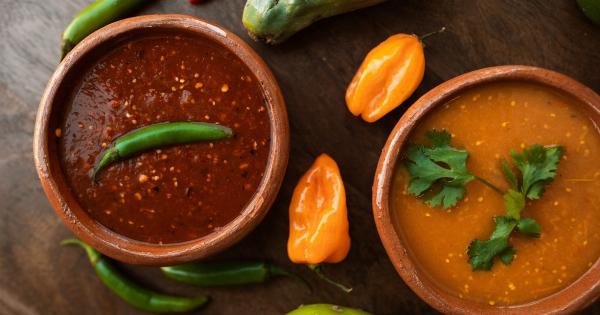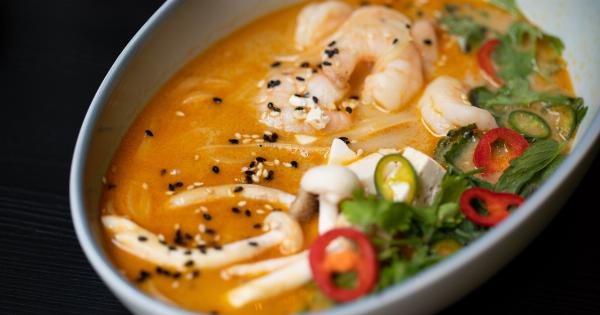Donuts, those sweet, fluffy, and delicious treats that are beloved by people of all ages and cultures around the world.
Whether it’s a classic glazed donut, a chocolate-filled donut, or a unique gourmet creation, there is something undeniably appealing about these delightful pastries. In this article, we will explore the universal appeal of donuts and delve into the reasons why they hold such a special place in our hearts (and stomachs!).
A Brief History of Donuts
Before we dive into the reasons behind the universal appeal of donuts, let’s take a brief look at their origins. Donuts, as we know them today, have a rich and diverse history that spans centuries and continents.
The exact origins of donuts are still a matter of debate among food historians. However, it is widely believed that donuts were first introduced by Dutch settlers in North America during the 18th century.
These early donuts were often made by frying balls of dough and were known as “olykoeks,” which translates to “oily cakes” in Dutch.
Over time, donuts evolved into the ring-shaped treats we are familiar with today.
The idea of punching a hole in the center of the dough is said to have been inspired by Hanson Gregory, an American sailor, who wanted a more evenly cooked and less doughy pastry. This innovation led to the creation of the classic, ring-shaped donut that has become a staple in bakeries worldwide.
The Art of Donut-Making
One of the reasons behind the universal appeal of donuts is the artistry and craftsmanship involved in their creation. Donut-making is not just a simple baking process; it is a meticulous and skillful craft that requires precision and creativity.
From mixing the dough to shaping, proofing, frying, and glazing, each step in the donut-making process is crucial in achieving the perfect balance of flavors and textures.
Mastering these techniques takes time and dedication, and it is this attention to detail that sets donuts apart from other baked goods.
Furthermore, donuts offer endless possibilities for customization and innovation. Pastry chefs and bakers around the world are constantly experimenting with different flavors, fillings, and toppings to create unique and mouthwatering donut creations.
This constant innovation ensures that there is always something new and exciting for donut lovers to try.
The Irresistible Combination of Flavors and Textures
Donuts are renowned for their addictive combination of flavors and textures. The soft, fluffy dough, which is often sweet and slightly chewy, pairs perfectly with a wide range of glazes, fillings, and toppings.
Whether it’s a classic glaze, a rich chocolate frosting, or a creamy fruit filling, each bite of a donut offers a delightful explosion of taste and texture.
The contrast between the crispy exterior and the soft interior creates a satisfying mouthfeel that keeps people coming back for more.
Donuts as Comfort Food
Another reason for the universal appeal of donuts is their association with comfort and indulgence. Donuts are often regarded as a treat or a special indulgence, and they hold nostalgic and sentimental value for many people.
For some, donuts are reminiscent of childhood memories, like weekend trips to the local bakery or enjoying a box of freshly baked donuts with family and friends.
The familiar taste and aroma of donuts can evoke feelings of warmth and happiness, making them the perfect comfort food.
Additionally, donuts are often associated with celebrations and special occasions. Whether it’s a birthday party, a wedding, or a holiday gathering, donuts are a popular choice to sweeten the festivities.
The joy and happiness that come with these special moments often become intertwined with the experience of eating donuts, creating lasting memories.
Diversity and Inclusivity
One of the most remarkable aspects of donuts is their ability to appeal to people from diverse cultural backgrounds.
While the basic concept of a donut remains the same, variations of this beloved treat can be found in various cuisines around the world.
From the French beignet to the Italian bomboloni, the Polish paczki to the Indian vada, donuts have been adapted and reinvented in countless ways across different cultures.
These variations incorporate local flavors, spices, and techniques, resulting in a diverse range of donut experiences.
This inclusivity and adaptability make donuts a globally recognized and appreciated treat. No matter where you are in the world, you are likely to find a local version of a donut that reflects the unique culinary traditions and tastes of that region.
The Social Aspect
Finally, the universal appeal of donuts can also be attributed to the social aspect that accompanies their consumption.
Donuts are often enjoyed in social settings, whether it’s sharing a box of donuts with colleagues at work, enjoying a donut with friends during a coffee break, or bringing a box of donuts to a gathering.
Sharing a box of donuts can create a sense of camaraderie and connection among individuals. The act of offering someone a donut or accepting a donut becomes a gesture of goodwill and a way to bond over a shared love for these delectable treats.
Conclusion
Donuts have rightfully earned their place as a universally beloved treat.
Through their rich history, artful craftsmanship, irresistible flavors and textures, association with comfort, diversity and inclusivity, and the social connections they foster, donuts continue to captivate people of all ages and cultures.
So, the next time you bite into a warm, freshly glazed donut, take a moment to appreciate the universal appeal that this simple pastry holds.
Whether you are enjoying a classic glazed donut or indulging in an innovative, gourmet creation, know that you are partaking in a culinary tradition that has brought joy to countless people throughout the ages.






























